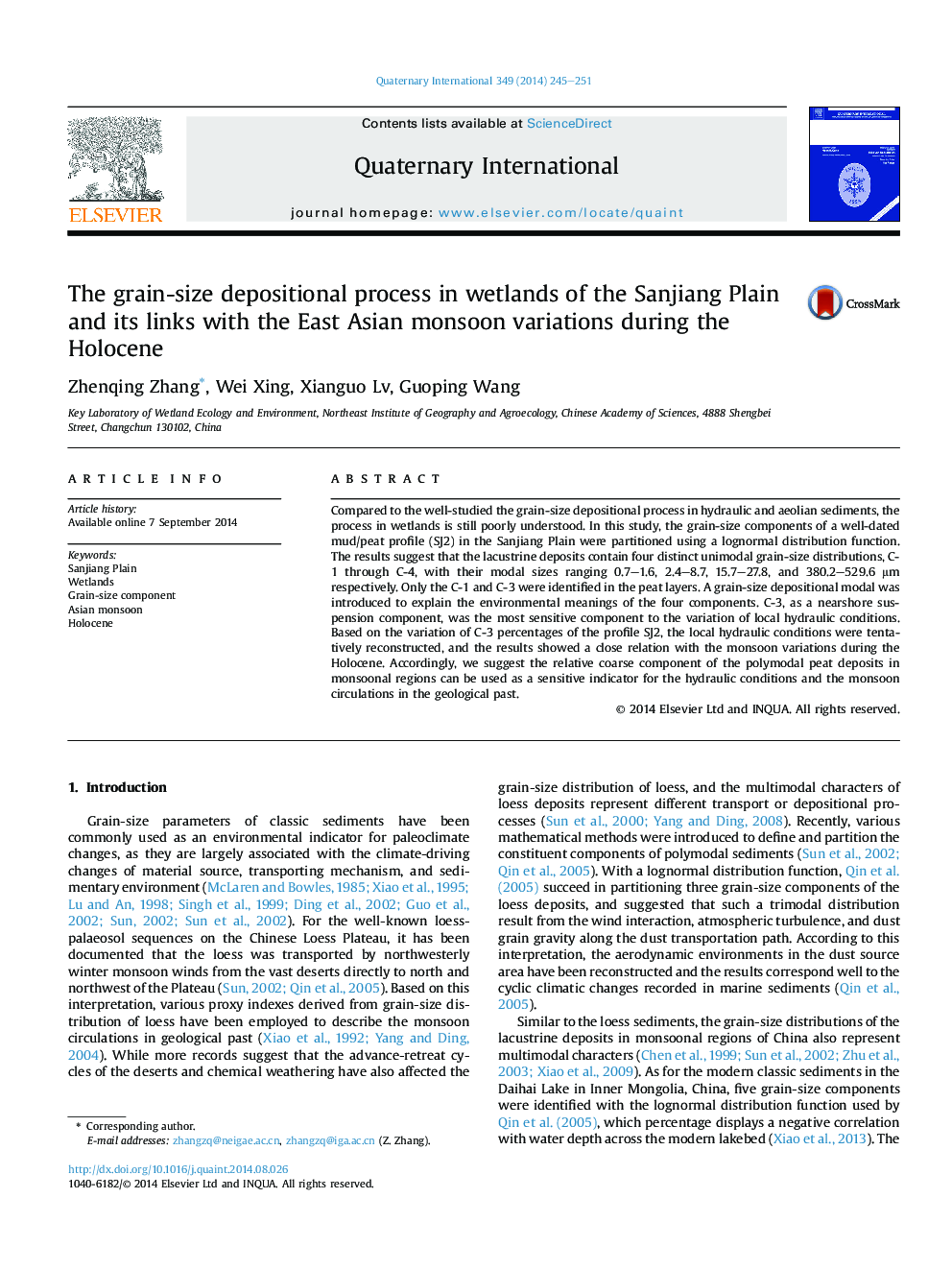| Article ID | Journal | Published Year | Pages | File Type |
|---|---|---|---|---|
| 1041130 | Quaternary International | 2014 | 7 Pages |
Compared to the well-studied the grain-size depositional process in hydraulic and aeolian sediments, the process in wetlands is still poorly understood. In this study, the grain-size components of a well-dated mud/peat profile (SJ2) in the Sanjiang Plain were partitioned using a lognormal distribution function. The results suggest that the lacustrine deposits contain four distinct unimodal grain-size distributions, C-1 through C-4, with their modal sizes ranging 0.7–1.6, 2.4–8.7, 15.7–27.8, and 380.2–529.6 μm respectively. Only the C-1 and C-3 were identified in the peat layers. A grain-size depositional modal was introduced to explain the environmental meanings of the four components. C-3, as a nearshore suspension component, was the most sensitive component to the variation of local hydraulic conditions. Based on the variation of C-3 percentages of the profile SJ2, the local hydraulic conditions were tentatively reconstructed, and the results showed a close relation with the monsoon variations during the Holocene. Accordingly, we suggest the relative coarse component of the polymodal peat deposits in monsoonal regions can be used as a sensitive indicator for the hydraulic conditions and the monsoon circulations in the geological past.
